“We’re in a storytelling crisis”: Advice for writing on nuclear issues, from the author of “Fallout”
By Sara Z. Kutchesfahani | December 16, 2020
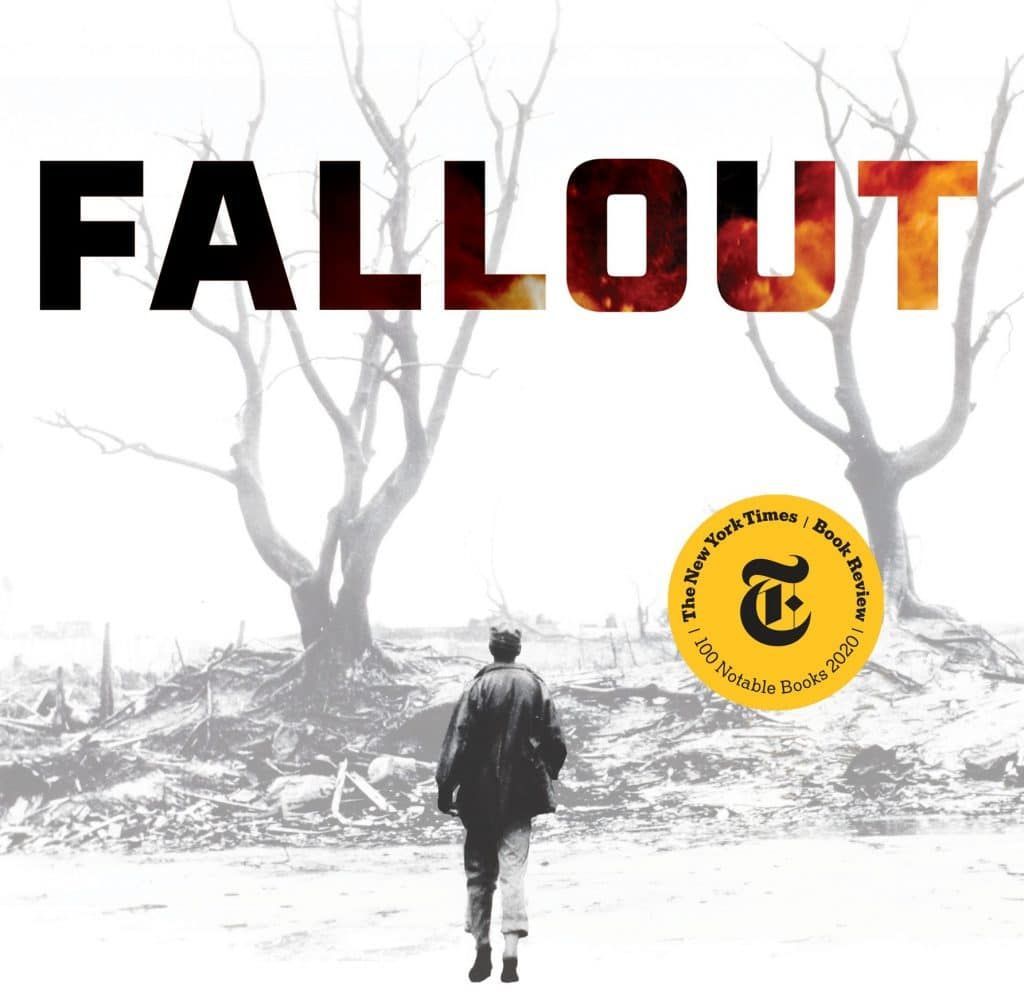 A cropped image of the cover of "Fallout," by Lesley M. M. Blume, which tells the behind-the-scenes story of John Hersey’s reporting on Hiroshima. Image courtesy of Simon and Schuster.
A cropped image of the cover of "Fallout," by Lesley M. M. Blume, which tells the behind-the-scenes story of John Hersey’s reporting on Hiroshima. Image courtesy of Simon and Schuster.
Storytelling is an important tool to change public perception. Recent research has shown that people are ready for nuclear weapons to enter the storytelling space, as long as these new stories are told in less intimidating ways and feature nuclear weapons in the background—rather than the forefront—of a story. Very few publications in the national security space provide a forum for storytelling, with the notable exception being the online publication Inkstick.
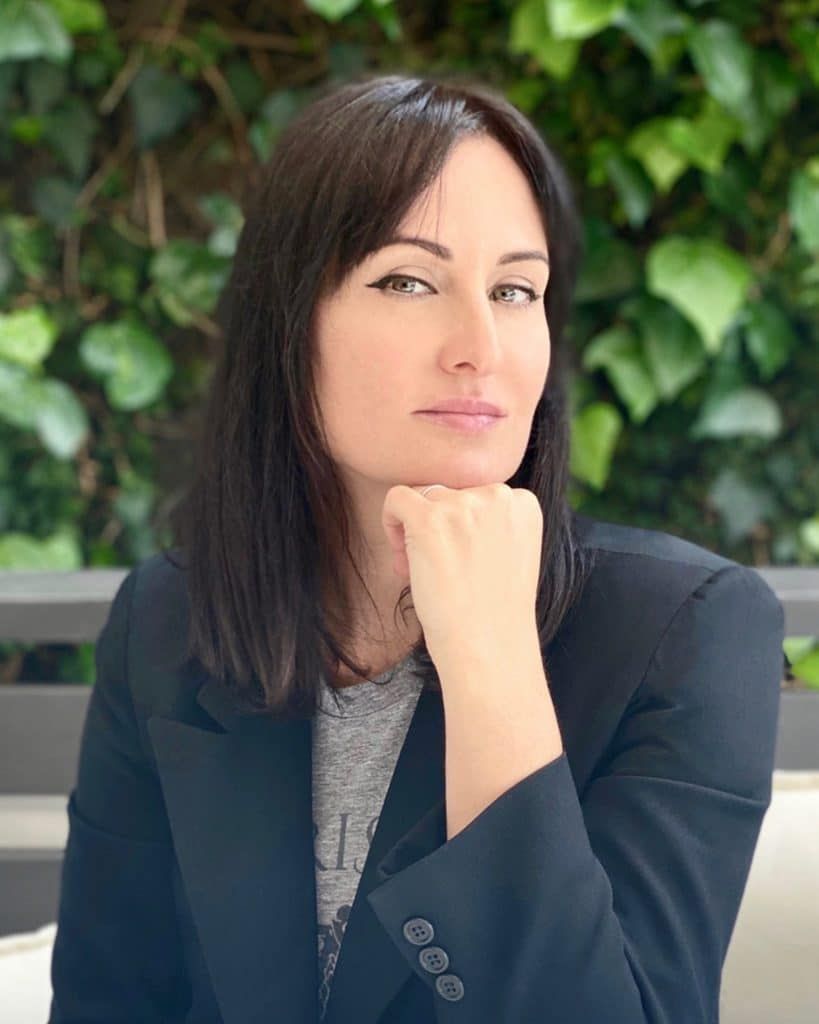
How can nuclear policy experts become better storytellers? I thought Lesley M. M. Blume would have some prescient advice. Her new book powerfully shows how one courageous American reporter unraveled one of the deadliest cover-ups of the 20th century—the true effects of the atomic bomb—potentially saving millions of lives. Fallout tells the incredible story of how New Yorker journalist John Hersey of Hiroshima fame was able to go to the Japanese city in the aftermath of the bombing and interview six survivors.
Even before the Japanese surrendered in 1945, the US government and military had begun a secret propaganda and information-suppression campaign to hide the devastating nature of nuclear weapons.
The cover-up intensified as Allied occupation forces closed Hiroshima and Nagasaki to Allied reporters, preventing leaks about the horrific long-term effects of radiation that would kill thousands during the months after the blast. For nearly a year, the cover-up worked—until John Hersey got into Hiroshima and managed to report the truth to the world.
As Hersey and his editors prepared his article for publication, they kept the story secret—even from most of their New Yorker colleagues. When the magazine published “Hiroshima” in August 1946 as a single issue, it became an instant global sensation, and it changed the US public’s perception of the dropping of the bombs virtually overnight from that of pride to that of visceral repulsion and existential fear. Hersey’s story brought home, for millions across the United States and around the world, the true implications of the then-new atomic age.
On December 10, I interviewed Lesley about her brilliant book. We talked about how the publication of Hiroshima changed the US public’s perception of the bombs, the lessons learned, and how nuclear experts can become better storytellers. The transcript is below.
Lesley M. M. Blume (left) in conversation with Sara Z. Kutchesfahani on December 10, 2020. Blume’s book Fallout, published in August 2020, documents the Hiroshima cover-up and how a reporter – John Hersey – revealed it to the world.
Sara Kutchesfahani: What drew you to tell the story behind Hersey’s Hiroshima? Was it the subject of nuclear weapons?
Lesley M. M. Blume: From a certain point of view, I guess I’m a good case study about how you can draw somebody into the realm of nuclear issues through a different kind of storytelling, because I did not initially come at this with the intention of becoming an advocate for nuclear [arms] control or even with an overriding interest in nuclear issues. As a child of the ‘80s, there has always been a pervasive fear of nuclear war for me, but it hasn’t really been a part of my driving psyche, and it had definitely shifted into being a more low-grade fear in recent years, before I started working on Fallout.
I came at this story more with the intention of advocating for journalists. I am myself a journalist, I am from a family of journalists, practically my entire community is journalists, I’m married to a journalist. The journalism community is sacred to me, and the last five years have been pretty tough for us. I was enraged and disgusted by the designation of journalists as enemies of the people by our current [US] president, and how much of a degrading effect that was having on our press’s ability to fulfil its duties as the fourth estate. So, I really came to the Hersey story hoping that it would make the strongest case possible for the importance of our independent press, and for the importance of investigative journalism, and drive that home for readers.
However, the topical matter of what Hersey had been covering in his story, Hiroshima, completely drew me into the nuclear world and created an urgency for me as a journalist and a citizen about nuclear issues that I would not have had otherwise. I credit that backdoor approach with creating a personal relationship to the issue of our current, perilous nuclear landscape, which otherwise might have seemed very impersonal and very far away from me.
Sara Kutchesfahani: In your opinion, how did the publication of Hiroshima as a single issue of the New Yorker—something which had never been done before—challenge or change the US public’s perception of the bombings in Japan?
Lesley M. M. Blume: There was the “before” Hersey’s Hiroshima, and then there was the “after” Hersey’s Hiroshima. Before Hersey’s book came out, the atomic bomb had been largely painted by the US government and military essentially as a conventional mega weapon. It was quickly becoming an accepted part of our conventional arsenal, even a tenable cost-saving weapon—it costs a lot less money to lob a nuke at somebody than it does to move troops into an area to wage combat—and, as such, there was a widespread acceptance of and enthusiasm about the weapon between August 1945 and August 1946. The bomb was normalized, in the public’s estimation, with surprising rapidity. [US President] Harry Truman himself referred to the bomb as just a “bigger piece of artillery.” After Hersey’s Hiroshima comes out, readers—and not just American readers, but readers around the world—are seeing what these then-experimental weapons indeed do to human beings, not just at the moment of detonation, but in the hours, days, weeks, months, and years to come. This is because Hersey was able to document the first part of the long tail of nuclear weapons, namely that they are the weapon that continues to kill indefinitely after detonation.
The book immediately affected American attitudes: the vast majority of polled Americans in August 1945 were thrilled about the bombs because, they were told, the bombings had saved both American and Japanese lives, hastened the end of the war, and avoided a land invasion. Not only that, but they also viewed it as pure vengeance. When President Truman made his announcement about the Hiroshima bombing, he said that the Japanese had been repaid manyfold for Pearl Harbor. Many people agreed with him then, and they agree with him now; people are still passionate about the payback element of it. However, as one reader wrote to the New Yorker, Hersey’s Hiroshima took “the Fourth-of-July attitude” out of the pervasive response to the bombings of Hiroshima and Nagasaki. A lot of Americans who were suddenly feeling less festive or less gleeful about the bombings weren’t necessarily feeling remorse over what they had done to the largely civilian Japanese populations of the atomic cities. Rather, they feared having entered into the atomic age because Hersey had confronted them with a true reality of what the new era meant. Even if they weren’t thinking with pity about Hiroshima, they were putting Dayton, or New York City, or San Francisco, in Hiroshima’s place—and I think what the empathy in Hiroshima did in terms of placing readers in the shoes of six regular Japanese folks, as Americans would call them, who had experienced and survived nuclear attack, allowed people to visualize themselves in the stead of those in Hiroshima, creating a new repulsion and terror of weapons that for the previous year people had been uneasy yet largely complacent about.
Sara Kutchesfahani: What is the lesson here?
Lesley M. M. Blume: For the nuclear community, it is about finding ways to personalize the story, to draw people into the issues emotionally and personally. One of the remarkable feats of Hersey’s story: Not everyone could comprehend how atomic weapons worked, or fathom global nuclear war, but they could certainly relate to what it was like, as an individual, as a mother, father, doctor, or clerk going about one’s daily morning routine when disaster strikes. The story was a way of illustrating what made the atomic age so uniquely threatening.
The story of Hersey and Hiroshima also provides lessons about finding ways to help readers and citizens find personal agency in affecting nuclear outcomes. Hersey showed how a sole journalist who didn’t cover the beat of atomic energy—he was a generalized war correspondent—basically changed the perception of nuclear weapons overnight. He helped create and influence generations of leaders and advocates with his writing, literally affected worldwide opinion in a permanent way—that is, as long as his work continues to be read.
For the journalism community, and this was equally important, Hersey’s work demonstrated the extreme importance of finding the human element in the story you’re telling, because it always comes down to the human element. If you can draw people in that way, if they can see themselves in the story, if they can empathize with the protagonists of a story, then you’re more likely to engage them, not just in the moment, but in a longstanding way. So Hersey gave journalists a really powerful tool with which to humanize casualty stories, disaster stories, catastrophe stories, whether they are on a mass scale or an intimate scale.
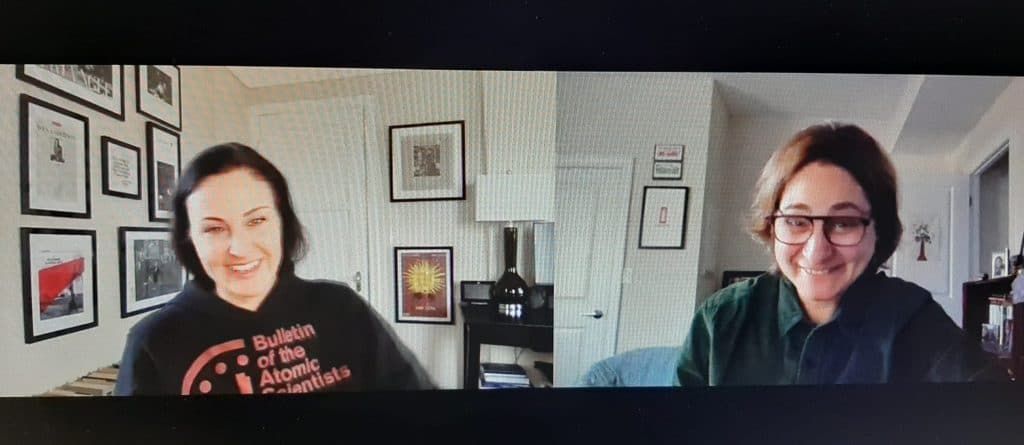
Sara Kutchesfahani: Some of us who work in the nuclear space already know that we need to incorporate more storytelling rather than always reporting on the technical aspects (like costs, delivery types, and yields). But many of us don’t know how to do it. And some of us might be afraid to try, or we think it’s too risky. So, what advice might you offer, what insights can you give us—beyond that we need to do more storytelling—into how we can do this?
Lesley M. M. Blume: There’s nothing to be afraid of in creating accessible storytelling; I mean, it doesn’t undercut the findings or information, it’s about making it comprehensible in layman’s terms. If you are attempting to change policy regarding certain aspects of the nuclear space, then you have to have mass support and mass comprehension. One way to explain that is to always break it down into relatable terms. For instance, I started my news career at “Nightline” when Ted Koppel was there, and we had a few reporters there who were always trying to break things down into terms that non-experts could comprehend. There are a couple of ways to do it; one of them was what they called “man on the street,” that is, getting the point of view from the street up as opposed to just reporting what’s happening from the top down.
Second, we were always putting mass statistics of any kind into relatable terms. For example, we did one story on Ariel Sharon and his controversial visit to the Dome of the Rock in Jerusalem, and we were trying to give people who had never been to Jerusalem a sense of the size of the space. I remember one of our correspondents said, “Find out for me how many football fields wide the Dome of the Rock is.” When you put it in that way, all of a sudden, Americans said, “Oh my God, this space, which is literally the size of one football field, is threatening to destabilize the entire Middle East.”
Using such visuals is important for creating comprehension of mass casualty statistics too. So, for instance, with COVID stats right now, with more than 275,000 known casualties [in the United States], it’s hard for the human mind to comprehend that. I’ve seen some ghoulish reporting—like, if you put that in the context of how many sports arenas that number of bodies would fill—it’s chilling as hell, but it drives the point home.
When President Truman announced that the [atomic] bomb was the equivalent of 20,000 tons of TNT, he would use that to make the bomb seem equivalent or cast it within the terms of a conventional bomb, but at least it did drive home to people around the world, who were then solely accustomed to thinking in TNT terms, how mega this weapon was. So you have a young Walter Cronkite who was like, “It can’t be 20,000 tons, it has to be 20 tons,” and so he writes that up in his report. The point is, that metric helped him really comprehend the magnitude of the bomb. Any time you can put it in minute and conventional terms, it is certainly not going to detract from the scientific findings themselves. What you’re doing is you’re just finding a way to illustrate the scientific findings and their implications for the rest of us.
Sara Kutchesfahani: Is there anything else you would like to add? Any parting words?
Lesley M. M. Blume: As I’ve been doing publicity for Fallout this fall since the book came out on August 4, I’ve been pretty shocked by an increased complacency toward the nuclear landscape, which the Bulletin of the Atomic Scientists has deemed the most perilous ever. I‘ve been shocked by how, here we are in the most perilous nuclear landscape in 75 years, how the nuclear threat is not on most people’s minds. And it certainly wasn’t a significant election issue by any stretch of the imagination. Whenever you would see these write ups about where the candidates stood on 10 or 12 issues such as trade with China, the pandemic, or climate change, the nuclear landscape was never one of them. The younger my interviewers were, the less concerned they were, and that’s because it hasn’t been a part of their psyche of what’s surrounding them—and not just because we’ve been dealing with other urgent existential threats like the pandemic and climate change.
I would argue that we’re in a storytelling crisis, and the kind of storytelling that we are talking about right now needs to be revved up to the nth degree. While we—those of us in the journalism and nuclear spaces—understand the gravity of where we are, and how dangerous our current global stockpile is, and that we have fewer means of communication for de-escalation than ever, and how easy it would be for what Hersey called “slippage” to take place now—the rest of the world isn’t getting it. And as the pandemic worsens, this issue is getting less and less attention. Fallout came out in the United Kingdom a few weeks ago, and there was no bandwidth for op-eds about staring down the nuclear threat. Nor was there much of an appetite among US editors for an op-ed advocating that the nuclear landscape be a bigger election issue—even among publications that gave Fallout considerable launch coverage.
As vaccines start to roll in, and it’s the beginning of the end for the pandemic, we need to be anticipating the moment when the news landscape opens up enough for us to leap in and start to drive home the urgency of this threat. The nuclear challenges that still face us have never been resolved in 75 years—even during historical moments when world leaders put their all into creating de-escalation mechanisms, when whole populations were completely immersed in the dangers of the nuclear threat. We are now far from eras of peak awareness like the 1950s, 1960s, and 1980s, and we need to work really, really hard to create an increased awareness as soon as possible. Because with the pandemic, there’s a vaccine; with climate change, we can work to dial it back. But nuclear disaster on a global scale? There’s no coming back from that. As Albert Einstein said, “I know not with what weapons World War III will be fought, but World War IV will be fought with sticks and stones.”
Together, we make the world safer.
The Bulletin elevates expert voices above the noise. But as an independent nonprofit organization, our operations depend on the support of readers like you. Help us continue to deliver quality journalism that holds leaders accountable. Your support of our work at any level is important. In return, we promise our coverage will be understandable, influential, vigilant, solution-oriented, and fair-minded. Together we can make a difference.
Keywords: Hiroshima and Nagasaki, nuclear weapons
Topics: Interviews, Nuclear Risk


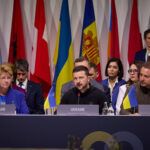


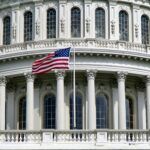










This is such an important article. Whether we like it or not, an issue becomes important to people – not because it actually IS vitally important, but because it is described, pictured, written about as something that is important to the simplest non-expert, ordinary, person. In this pandemic period, the nuclear lobby has done a damn good job in just not covering the true importance of nuclear weapons. The mindless mainstream media happily goes along with this impressive non coverage. On January 22nd, the Trarty on the Prohibition of Nuclear Weapons will become international law. The global nuclear lobby will… Read more »